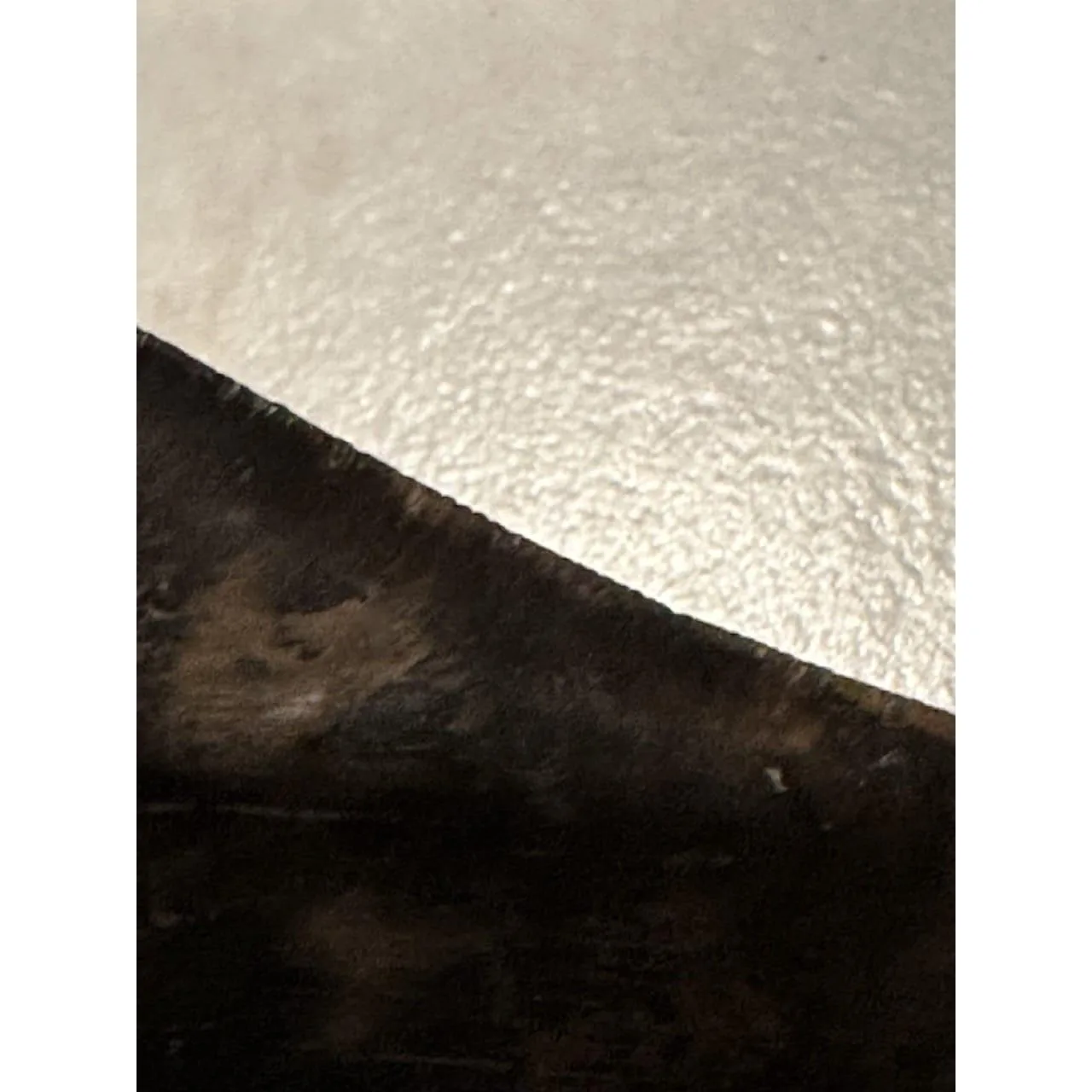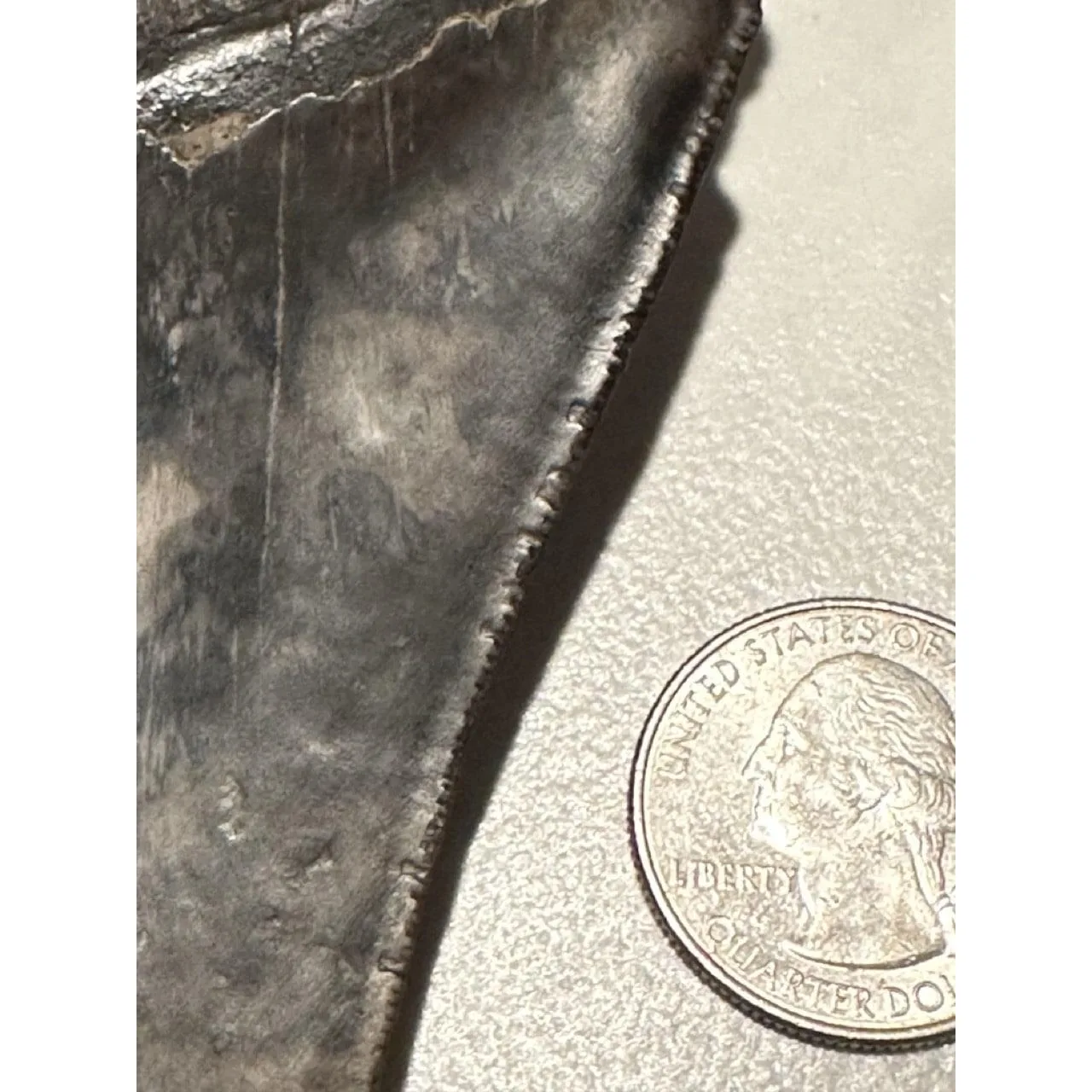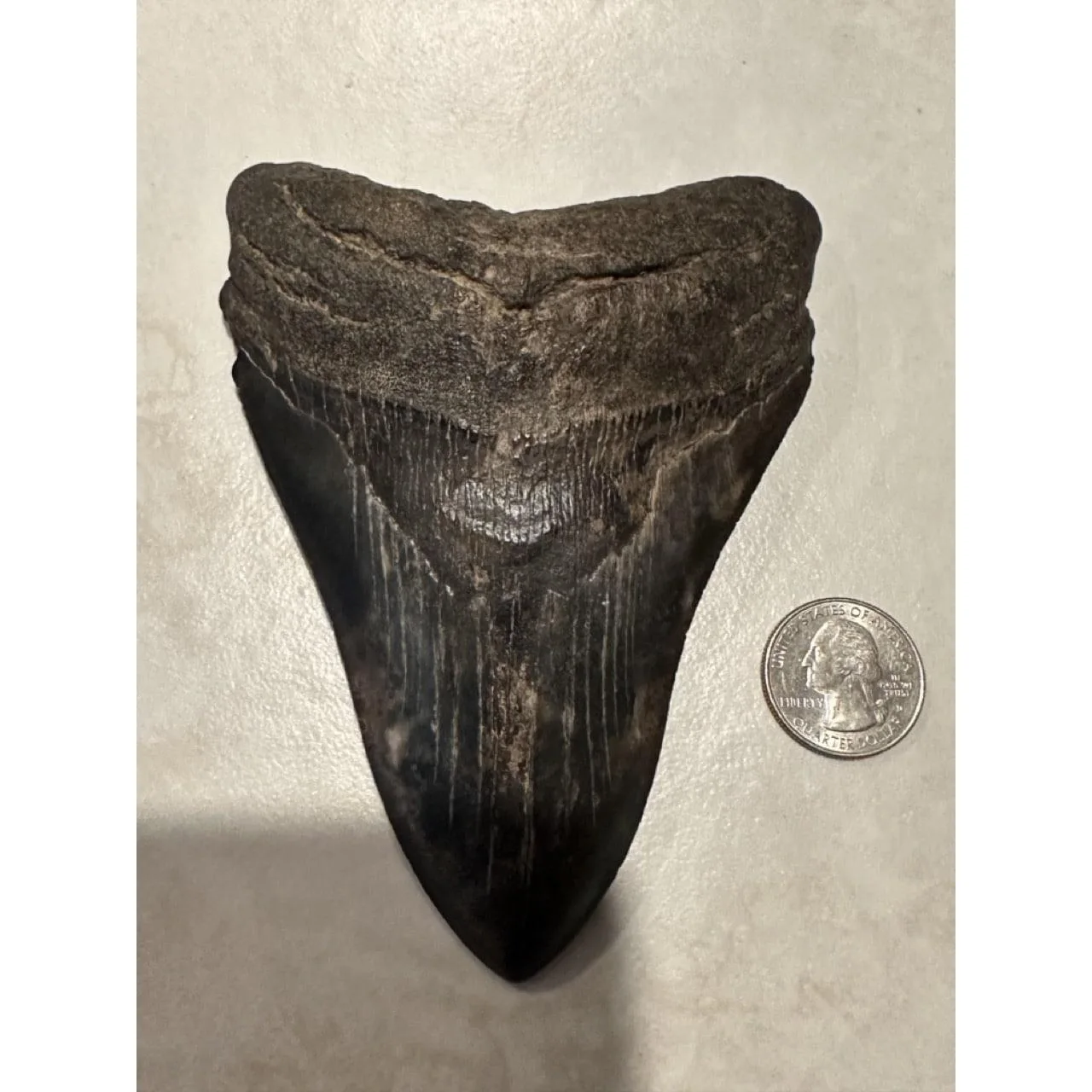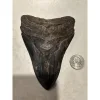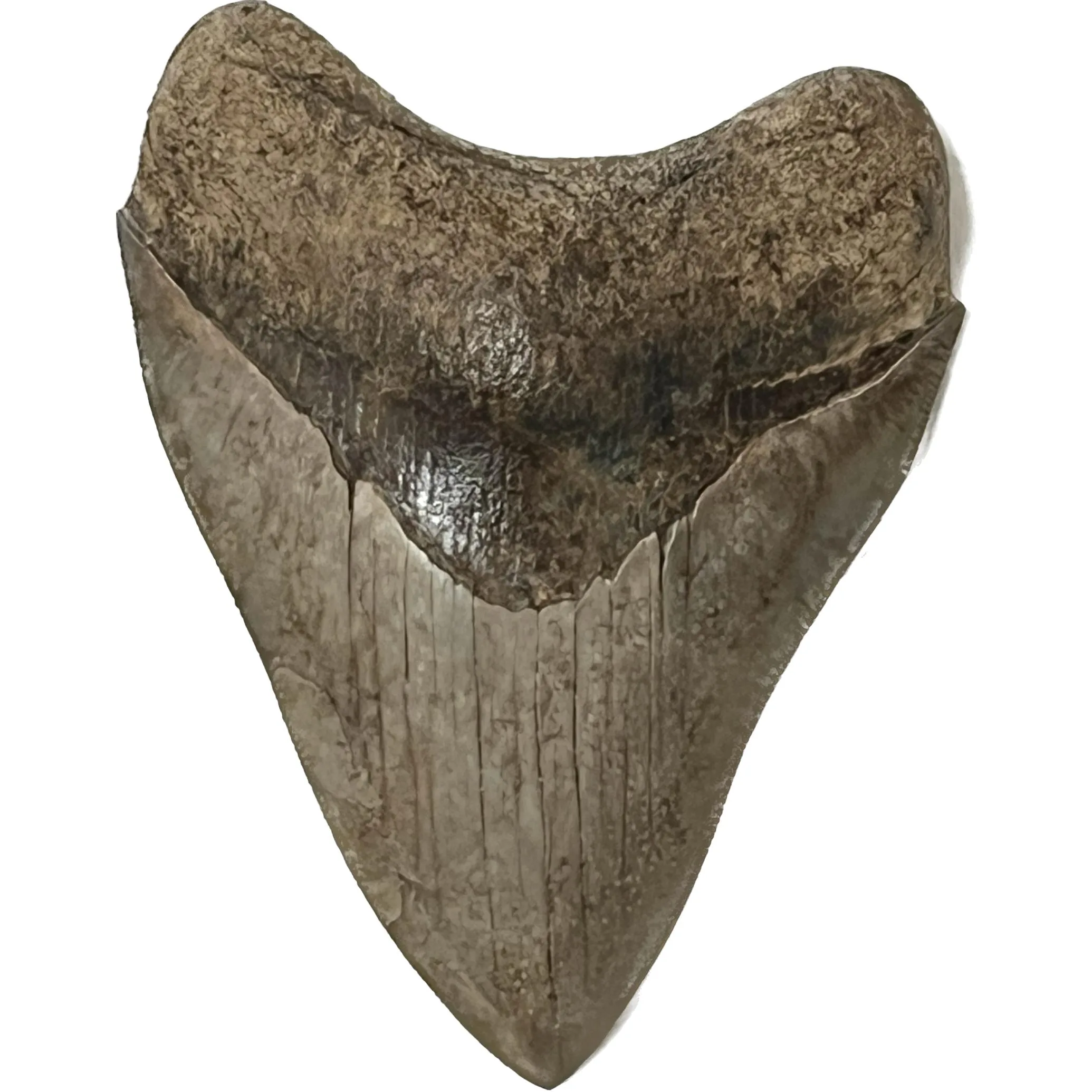Megalodon Tooth, S. Georgia 5.29 inch
Emerging from the depths of the St. Marys River in Georgia is a colossal 5.29-inch Megalodon shark tooth, adorned with a mesmerizing bluish-gray coloration that sets it apart as a rare gem of prehistoric heritage. Despite its substantial size, this tooth exhibits remarkable quality, a testament to the preservation of ancient relics within the region. However, a slight imperfection reveals itself in the form of a minor enamel peel down the middle, adding character to this majestic artifact. The St. Marys River, known for its abundance of fossil treasures, continues to unveil wonders from Earth’s distant past, each fragment offering a glimpse into a bygone era. Despite its flaw, this extraordinary tooth serves as a tangible reminder of the awe-inspiring creatures that once roamed the ancient seas, captivating the imagination with its enduring allure.
All Megalodon sold by Prehistoric are 100% natural, no restoration and no paint! You can buy with the upmost certainty of the authenticity. South Georgia teeth are extremely difficult to find. The quality of S. Georgia teeth are unparalleled. Serrations are very prominent and teeth are mostly near perfect or better.
Megalodon was an ancient shark that may have been 40 feet (12 m) long or even more. (There are a few scientists who estimate that it could have been up to 50 or 100 feet (15.5 or 31 m) long!) This is at least two or three times as long as the Great White Shark, but this is only an estimate made from many fossilized teeth and a few fossilized vertebrae that have been found. These giant teeth are the size of a person’s hand! No other parts of this ancient shark have been found, so we can only guess what it looked like. Since Megalodon’s teeth are very similar to the teeth of the Great White Shark (but bigger and thicker), it is thought that Megalodon may have looked like a huge, streamlined version of the Great White Shark.

Megalodon’s diet probably consisted mostly of whales. Sharks eat about 2 percent of their body weight each day; this a bit less than a human being eats. Since most sharks are cold-blooded, they don’t have to eat as much as we eat (a lot of our food intake is used to keep our bodies warm).
Shark fossils are extremely rare because sharks have no bones, only cartilage, which does not fossilize well. Their teeth, however, are very hard. Their teeth are made of a bone-like material coated with hard enamel and they fossilize very well. Megalodon teeth are similar to those of the Great White Shark, but are much bigger, thicker, and with finer serrations. Megalodon’s jaws could open 6 feet (1.8 m) wide and 7 feet (2.1 m) high. The jaws were loosely attached by ligaments and muscles to the skull, opening extremely wide in order to swallow enormous objects. It could easily swallow a large Great White Shark whole!
Like most sharks, Megalodon’s teeth were probably located in rows which rotated into use as they were needed. Most sharks have about 3-5 rows of teeth at any time. The front set does most of the work. The first two rows are used for obtaining prey, the other rows rotate into place as they are needed. As teeth are lost, broken, or worn down, they are replaced by new teeth. Megalodon may have had hundreds of teeth at one time. It did not chew their food like we do, but gulped it down whole in very large chunks.
Megalodon lived from roughly 25 to 1.6 million years ago, during the Miocene and Pliocene epochs. It is now extinct, but the exact time of its extinction is hotly debated. Fossilized Megalodon teeth up to 6.5 inches (17 cm) long have been found in Europe, India, Oceania (the general area around Australia including New Zealand, New Caledonia, etc.), North America, and South America. Carcharodon megalodon was named by Agassiz in 1843. There is some debate as to whether megalodon was an ancestor of the Great White Shark or was an evolutionary dead end.
Megalodon, an ancient apex predator, dwarfed modern great white sharks in size and power. Believed to have lived roughly 23 to 3.6 million years ago, Megalodon could reach lengths of up to 60 feet or more, making it one of the largest known predators in Earth’s history. Its massive jaws were armed with teeth measuring over 7 inches in length, far surpassing those of the great white.
In comparison, the modern great white shark typically reaches lengths of 15 to 20 feet, with teeth averaging around 2.5 inches. Despite the size difference, great whites possess remarkable agility and speed, capable of reaching bursts of over 25 miles per hour and delivering powerful bites.
If these two predators were to confront each other, the outcome would likely depend on various factors such as size, age, and individual temperament. Megalodon’s immense size would give it a significant advantage in sheer strength and bite force. However, the great white’s agility and possibly higher intelligence could play a role in evading or outmaneuvering its larger counterpart.
Ultimately, while Megalodon’s size would make it an intimidating opponent, the great white’s adaptations and predatory skills might provide it with a fighting chance in a hypothetical encounter.

Prehistoric 101 (Learn about fossils, minerals, and meteorites)
Learn about Megalodon Sharks
Megalodon Sharks of the World
The Megalodon: Smithsonian Institution



